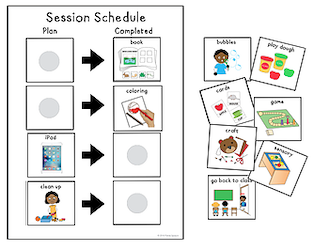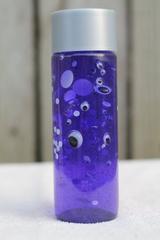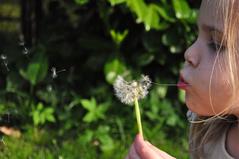Your Cart is Empty
Save up to 20% on all Harkla products & courses during Autism Acceptance Month! Click Here to See the Sale

Children enjoy diving hands first into play experiences. Completing the tasks of building blocks, working a puzzle, and drawing pictures will yield skills that the child will use throughout his lifetime.
Occupational therapists are fortunate enough to be a critical part of the treatment team for children with special needs. Therapists who work with children are experts in looking at different games, activities, and toys to determine which skills a child needs to complete them. It is a fun job to have indeed!
Remember that children are wired to use their senses to develop skills during play.
A toy that can be used in many ways and that involves more than one sense will automatically be more enjoyable. Multi-sensory means that more pathways to brain development are opened and used.
In the article below, we'll cover 10 of our favorite activities for children with autism, which can work for all ages!
One of the cheapest and most versatile pieces of equipment I recommend is a simple foam pool noodle. They can be used in so many ways. Stock up at your local thrift store in the spring and summer for year-round fun. Here are some ways to use them:
It’s so easy to get stuck using only rice or grain. To prevent a huge mess, play on top of a shower curtain.
Check out our full list of sensory toys to choose from!
The area should be in a place in which your child feels safe and can relax, so avoid creating it in the center of the family’s home. Encourage your child to work with you and give them choices of material and what goes in the sensory area.
If you are feeling ambitious, you could create your child an entire sensory room!
Swinging is a very therapeutic activity for kiddos with autism! There are so many different ways to use a swing for therapy.
They are versatile in that they can be used for calming and self-regulation, or just a fun, enjoyable activity!
Below we cover 10 of our favorite activities for our best selling sensory swing, the Harkla Sensory Compression Swing:

Visual schedules have been critical in both my clinic and in my own home. I depend on a calendar and schedule to keep on track. It’s been proven that many children with autism are visual learners. This means that a picture schedule outlining the steps of a task is helpful.
Even for daily tasks such as taking a shower, a schedule of the steps should be posted so that kids know exactly what to expect and what comes next. This can be incorporated into play activities. So, take pictures of a block tower and number them.
Ask your child to put them in order by saying, ‘What comes first?’ and so on. One of the most helpful tools parents can use is a camera. Take step by step photos of each activity, print, and laminate them.
Use anything you can find. Taped lines are wonderful for ‘pretend’ balance beams. Hula hoops, bean bag tossing, jump ropes can all be included. Walking like animals is always fun and builds awesome gross motor skills.
Check out our video on making an obstacle course in 5 easy steps!
 The addition of smaller items your child prefers make the bottles fun and add visual appeal. For example, adding hair gel with a bit of water and glitter so that the glitter falls slowly through the bottle. Paper clips are fun to add so that kids can use a magnet to attract and move the paper clips throughout the jar.
The addition of smaller items your child prefers make the bottles fun and add visual appeal. For example, adding hair gel with a bit of water and glitter so that the glitter falls slowly through the bottle. Paper clips are fun to add so that kids can use a magnet to attract and move the paper clips throughout the jar.
Check out Pinterest for thousands of ideas for sensory bottles.
These are all the rage right now. Why? They can be customized for each child and are designed for many purposes. They can be created with water, hair gel, water beads, and other filler materials.
 Ask questions about why he doesn’t prefer the equipment or only walks in circles around the playground vs. using the equipment as designed. Offer fun alternatives such as alphabetic scavenger hunts and finding items beginning with each letter of the alphabet.
Ask questions about why he doesn’t prefer the equipment or only walks in circles around the playground vs. using the equipment as designed. Offer fun alternatives such as alphabetic scavenger hunts and finding items beginning with each letter of the alphabet.
These types of activities help children to use so many senses together. Encourage kids to play outside and in bare feet whenever possible. If your child is not fond of playground equipment, he may be letting you know that he needs additional therapy in order to overcome a fear or motor weakness.
Remember that children love to participate and gain parental approval. Even the most mundane of tasks can be fun when done together. For example, set a weekly menu. Look through cookbooks and the pantry to decide what items need to be added to the grocery list. Ask your child what meals he prefers and ask him to find out the required items and write them on the list. Then, shop together and work on getting familiar with the store. Finally, checking out helps with money management and budgeting. Remember that the ultimate goal is for your child to function independently and it’s never too late to start.
These can be incorporated throughout your child’s day. It’s critical to ensure your child is taking a break at school and preparing mentally for difficult assignments and tests.
Deep breathing and calming strategies should be practiced when things are calm and not stressful so that they can be easily accessed when a child is stressed.
Many breathing exercises and brain breaks can be found on the internet and here, at the Pocket Occupational Therapist website.
Thank you for reading about our favorite therapeutic activities for children with autism! We hope you are able to start working some of them into your child's life.
Keep following the Harkla blog for more awesome tips and helpful ideas to help those with special needs. We strive to provide the latest topics and activities for your family.
What activities are your favorites in your home? Let us know in the comments below!
Thank you
Shared this site
Thank you for so much knowledgeable information.
Thank you for the information I will share this website
Hey WJ,
Thank you so much for reading our blog! We’re really glad we were able to give you some good ideas. :-)
All the best,
Nicole from Harkla
Thank you for your creative and inexpensive ideas! It is hard to keep our son interested in any toy for a long while.
i am very interested to hear all your suggestions to help my special students at my school. I am a teacher and also the RSA which i am fully work with those severe kids at school and also kids that cannot go to school. So i am so happy to see and at the same time learning from different people to help me to give a best way and use the appropriate adaptations for those kids with different disabilities. I still need help from all people out there to work together as a team to provide a good education for all students at the school bound and also the homebound kids..thank you very much
Hi Judith,
Thank you for reading our blog. We’re really glad you found it to be helpful!
All the best,
Nicole from Harkla
Hi,I am a 72 year old grand and great grandmother. I have enjoyed reading your suggestions and ideas. I have a 2 year old great grandson,that will enjoy many of these toys. I do a lot of sewing and now have a lot of ideas to make things for him. Thank you for the great ideas.
Hi Tameka,
The water can be very overwhelming for kids. An idea would be to bring a small inflatable pool with you and use buckets to fill it with water. Have him to help you use the buckets to fill the pool. This will encourage him to go near the ocean and the pool will give him a smaller, less overwhelming place for him to stand or sit in the water.
Hope this helps!
Nicole
Harkla
As a counselor, I would like to have more science based treatments for the high achiever children with autism.
Hello my son was diagnosed with autism, every year my family plan a beach vacation and when get there he doesn’t want to go near the water only play in the sand by him self any suggestions or ideas
Hey Michelle and ADN,
Thank you for your feedback! We appreciate it. We are so happy that our article has been helpful to you.
Cheers!
Nicole
Harkla Happiness Ninja
Thank you for so much knowledgeable information.I am a business owner and nurse & information you have can help me assist my clients in home care with the families that are in need of our services.
i found it quite amazing ,different and applicable its a great favor for the parents with kids (autism).
Outdoor play benefits all children, and it can improve behaviour, social skills and attention in children with Autism Spectrum Disorder. Time to show your child the joy of great outdoors.
https://www.parentcircle.com/article/5-outdoor-activities-for-children-with-autism-spectrum-disorder-asd/
Thank you. I would like to share the website of The Association for Science in Autism Treatments, A non profit dedicated to inform parents about science-based autism treatments, and treatments that are untested or unsafe.
Comments will be approved before showing up.



Mellissa
January 20, 2022
The best information by far! I have been searching for ideas and advice for months since my child’s diagnosis. Most articles focus on signs and comparing autism to typical development. I will be sharing this with everyone. Thank you so much for sharing! -A very happy mom